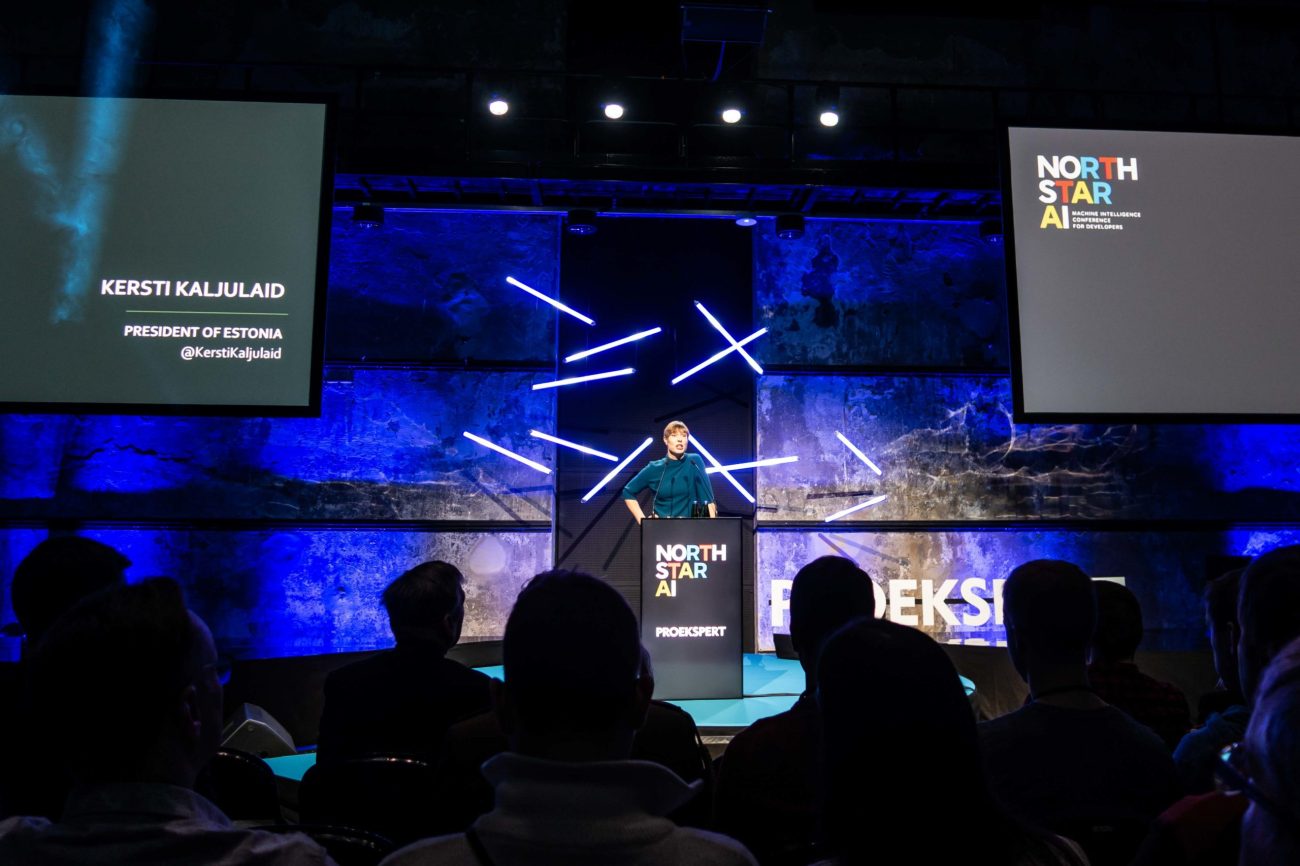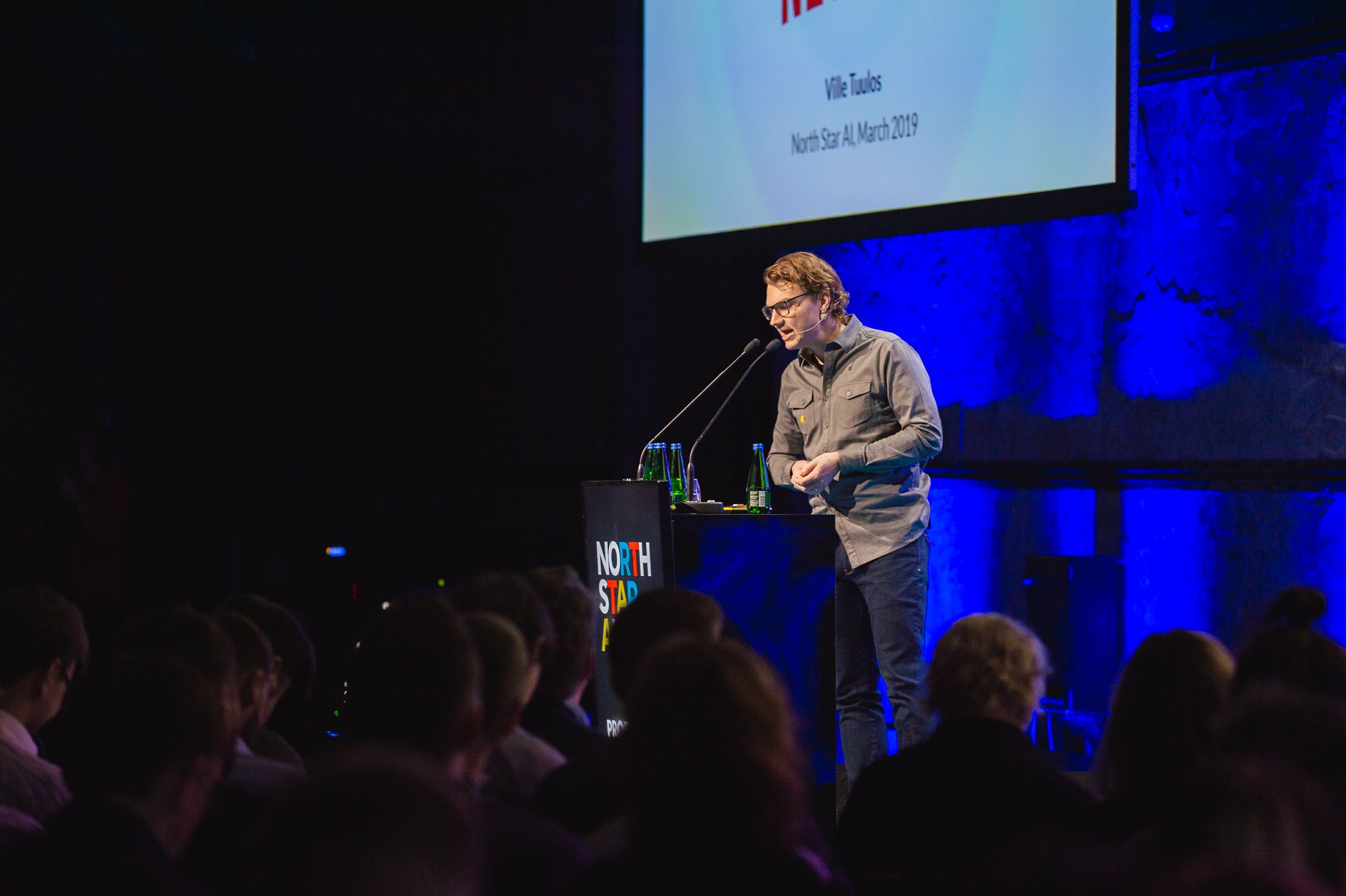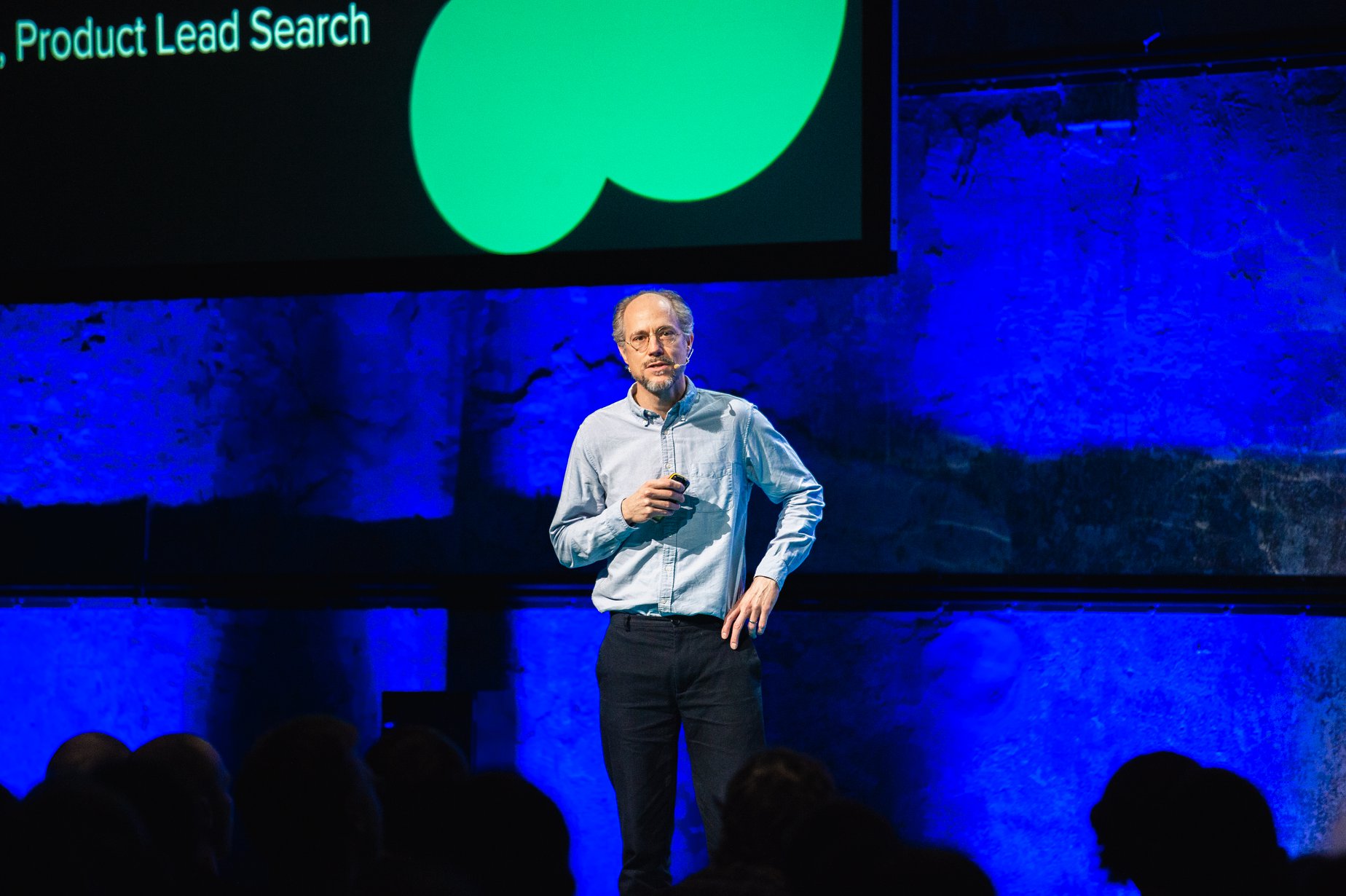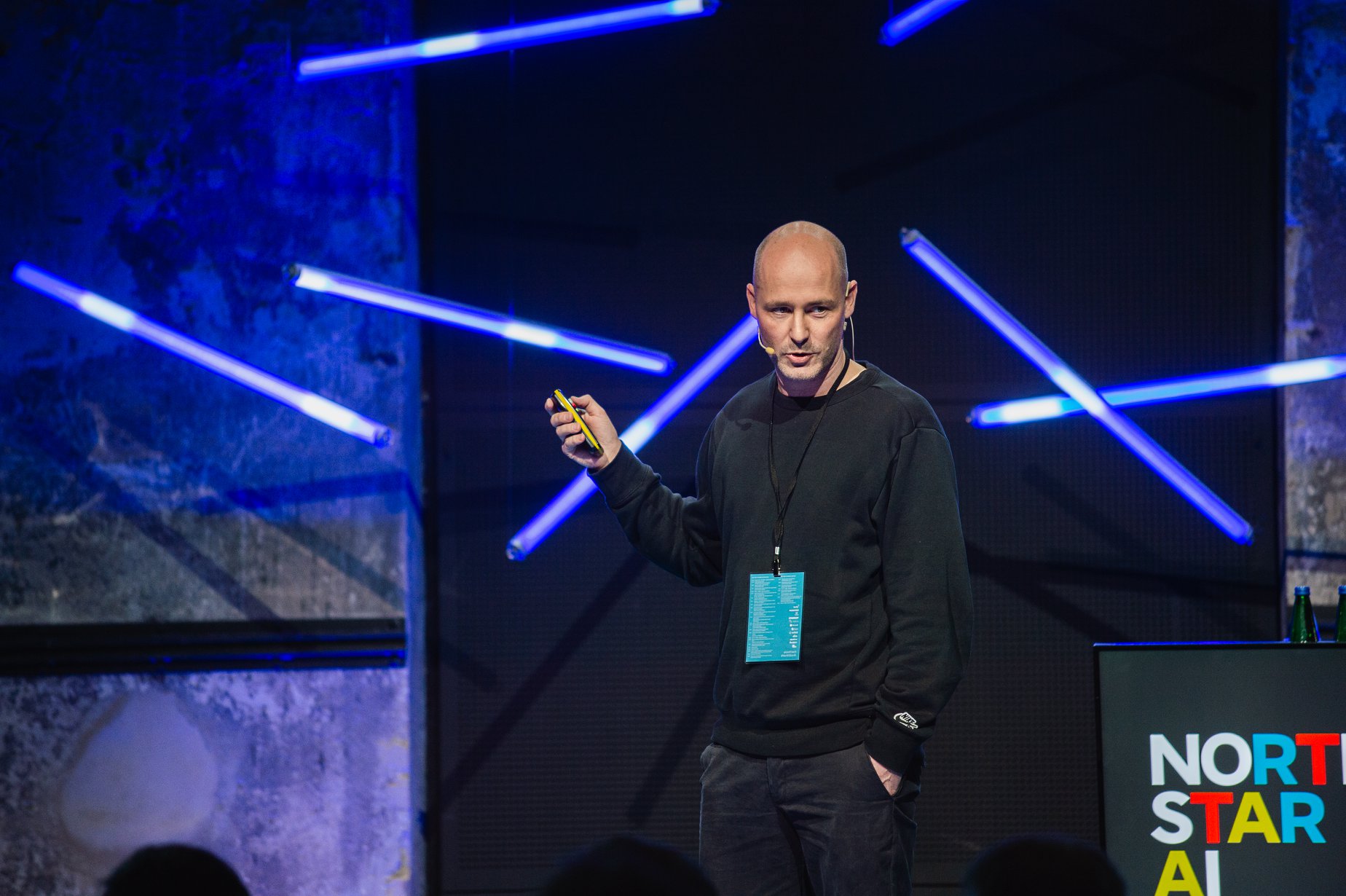
North Star AI: A practical conference of a high-level topic
Real AI and Machine Learning use cases can be roughly split into three categories: marketing and sales, operational excellence and commercial research. AI technologies are often discussed on a very abstract level. Instead of that, this article gives you some real use cases that AI and machine learning tools have enabled.
We all get to enjoy the fruits of Artificial Intelligence and Machine Learning development in our everyday lives, often without noticing. At Qvik, we focus heavily on the resource enabling all this development, that is, data.
In order to get inspired about some of the latest use cases of data, I took a ferry to Tallinn with our Data Scientist Mikko Kemppainen. There, at North Star AI conference, we met some industry leaders who have become more data-driven and made a profitable impact with the intelligent data solutions available to them.
Leaders and laggers play on the same field
Based on my experience and some research in the field (McKinsey; 2017, 2018), a split into leaders and laggards seems evident in AI adopters. Such technologies require high technical maturity and strategic attention that makes leaders leave the others behind. Many companies are still impeded by struggles with legacy IT systems and a lack of sophisticated digital integration with the core strategy.
But no matter where the data journey begins or how small the first step, all companies will find their path towards data and the AI-driven era sooner or later.
A common business driver towards AI across industries and companies is the desire to reduce the complexity of context and accelerate areas of excellence. In most markets, success requires extremely fast reactions and precise decision-making, which machines can assist us with. The rules of competitiveness are also being rewritten increasingly fast. Thereby, all companies regardless of AI maturity should stay informed about the hot topics.
These hot topics are often spoken of on a very high level. I am more interested in the real use cases that AI and machine learning tools can bring us. That’s also what we focused on at the North Star AI event with Mikko.
For the purposes of this article, I have split the theme into three categories: marketing and sales driven, operational excellence driven and commercial research. Here are the most interesting concrete examples from each category.
Marketing and sales driven examples: Concrete tips from Netflix and Spotify
Companies in this category are characterized by the emphasis placed on data at the core of the product’s value proposition. In practice, the data and AI efforts of the company add deeper market and customer insight to their sales and marketing efforts, enabling them to provide competitive offerings to fulfill customer needs.
Speaking of customers, some of the most familiar applications today are in fact well-known, and customer facing. These are companies such as Amazon and Netflix that recommend books and films to us and offer increasingly personalized experiences based on the high demand for tailored, so-called hyper customised, products and experiences.
Ville Tuulos, a leading ML infrastructure architect at Netflix, placed heavy emphasis on how the data and AI use cases that are most familiar to us – that is, recommendations – are merely the tip of the iceberg. The role of AI at Netflix goes far deeper and wider: their entire product development culture is determined by the data chosen, analyzed and displayed, and the decisions made based on it.
Netflix also does not have feature teams per se, but rather teams that own each of the algorithms governed by a business KPI. The key takeaway from his speech was that, in order to truly employ data and AI for consumer value and continuous innovation, the product team from data engineers to business owners needs to be in a data-driven mindset. As the following quote summarizes, he believed that data and tools such as AI can only be employed to their fullest potential if embraced as part of the process, alongside the business goals:
“To improve the results of an ML system, improve the productivity of the humans who operate it.” – Ville Tuulos

Ville Tuulos from Netflix speaking at North Star AI. Picture by Maido Parv.
In his talk, Henrik Lindström, Product Lead in Search at Spotify, explained how ML is linked to the very cornerstone of their company mission to connect the right music with the right people.
Lindström’s presentation focused on the explicit link between business KPIs and customer experience, and how data and ML enables them to link the two to make a world-class product. In fact, I found their methodology to be among the most interesting real-life cases for digital consumer products so far.
In this methodology, the team begins by looking into the consumer’s intents (what the consumer wants to achieve with the product), the current mindset of the consumer (the context), followed by careful user journey design and flow. All this is further tied to rigorous data-driven monitoring of KPIs, real-time analysis and reactions. The perfect build-measure-learn loop! In this way, Spotify has been able to take into account, for example, different use cases, motivations, and contextual impacts as part of their productization strategies.

Henrik Lindström, Product Lead in Search at Spotify. Picture by Maido Parv.
I also found Lindström’s take on personalization and the feared “personalization bubbles” very interesting. These bubbles are problematic for a reason, as they not only have the unintended consequence of eventually boring the user, but also contradicting the company’s very mission to bring the music and the people of the world together. To avoid this, they have implemented a standard practice of always adding some probability of difference in their ML models, and A/B test every algorithm prior to deployment at scale. Quite sophisticated, I would say.
Solutions driven by operational excellence: Delivery and transportation
Companies driven by operational excellence build data and AI into their core business, but with a focus on the operational model. This means creating excellence through automation, real-time analytics-driven operations, and predictive planning, for instance.
An example of this was the Estonian unicorn Bolt, previously known as Taxify, that uses data science to provide convenience and reasonably priced rides for everyone in all the 40+ cities they operate in. The advantage for them is that they are simultaneously able to exercise rigorous cost control and keep the user experience smooth and simple for both passengers and drivers. As you might guess, data is at the heart of everything that they do. Did you know that they are gathering the largest data science team in Europe?
Their CTO, Andre Karpištšenko, elaborated on the way data and ML are integrated into the model. For instance, he referred to something called the recency-frequency-monetary model of customer segmentation, which enables the company to focus its effort on where and when it matters to match demand and supply, and focus its marketing efforts on where churn might happen. Other use cases of ML consisted of back-to-back ride optimization and predictions.
Along with the new name, Bolt will expand their business model. During the coming months, Bolt will be providing other methods of transportation, such as scooters, through their platform. The company also hosted the official afterparty this year. Too bad we had to head back home instead of joining in and getting to know them better.
What may seem like a futuristic example was presented by Kristjan Korjus from Starship. The delivery robot service seeks to enable fully autonomous, robotic fast food and package delivery. As seems obvious, their team of data scientists needs to solve many practical problems in order to create a workable solution.
In this regard, Korjus presented their curious manifesto “Data is the specification”, emphasizing the benefits of an iterative approach to solving complex problems and highlighting their preference for low-hanging fruit over a search for general solutions in problematic cases. This is certainly an argument that will polarize opinions, yet a worthwhile one to consider for companies seeking to deliver operative excellence with AI.
Commercial research: AI for societal problem-solving by Ento Labs and in-house R&D by Bayer
Lastly, interesting developments are happening also in the field of commercial research, where companies are ambitiously aiming to solve the most fundamental questions and problems faster and more accurately than possible ever before.
In his presentation, “Fighting climate change with AI”, Henrik Brink from Ento Labs (co-founder of wise.io) talked about optimizing the use of energy, essential to lowering greenhouse-gas emissions and fighting climate change. Recent advances in AI and machine learning allow them to analyze vast and high-dimensional data to understand complex consumption patterns, make projective scenarios, and seek to recommend actions in real-time.
And yet, Brink pointed out that, in order to solve the most profound societal questions, the relevant data needs to be made available. In this regard, it is worth asking whether this is the responsibility of the private or the public sector, or both in much closer cooperation than anything seen today.

Djork-Arné Clevert from Bayer. Picture by Maido Parv.
Djork-Arné Clevert talked about new AI methods that Bayer is developing to create a meaningful representation that accurately describes the structure of chemical molecules, in order to pave the way for more rapid drug discoveries. He argued that this is important, as the cost and time to develop a drug is extraordinary; though the matter is subject to debate, some current estimates top $2 billion USD and more than 10 years from early discovery to market. Bayer is developing new methods for vector representations of molecular descriptors that make the process faster, with a higher chance of success. Insightful, yet complex topic!
More about North Star AI
North Star AI is an annual conference and a meeting place for experts to sharpen their tech skills, learn practical and actionable knowledge for product development from industry leaders and experts in person, and to spend quality time meeting new smart people. It is organized by the non-profit North Star AI. In just one day, we listened to a total of 22 speakers from 12 countries. The conference opened with an inspiring keynote by President of Estonia Kersti Kaljulaid, who briefly described the success of courageous AI efforts in Estonia. We enjoyed the day thoroughly and can’t wait for next year.
Please do not hesitate to contact us if you wish to discuss these subjects!



